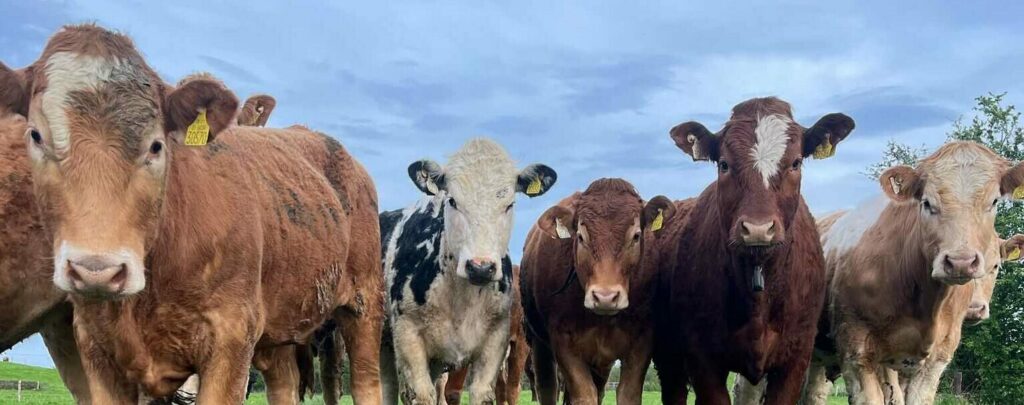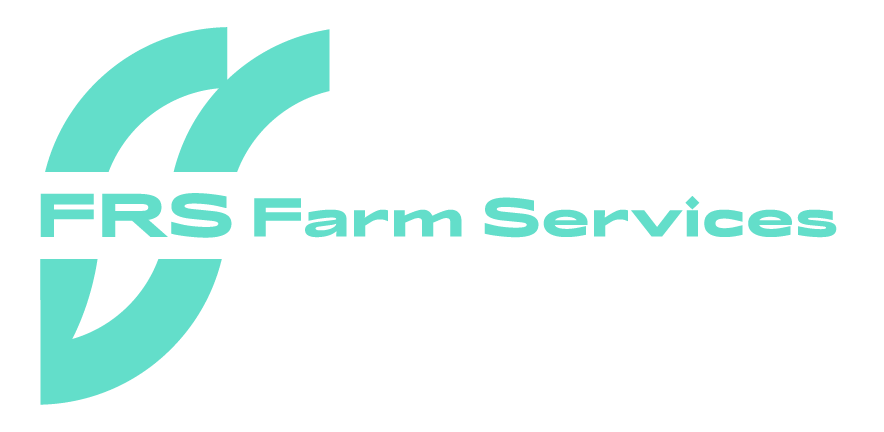As we reach the midway point in the breeding season, attention to detail and consistent observation become more important than ever. Niall Dervan, FRS Farm Services Manager, South Midlands and operator of a well-run suckler-to-beef farm, shares how he keeps things on track during this crucial phase of the farming year.
With calving well behind him, the breeding season is now in full swing—and every decision made today directly influences the efficiency and profitability of next year’s calving.

Body Condition Still Matters
For mid-breeding season management, body condition score (BCS) remains a top priority.
“We’re keeping a close eye on cow condition,” Niall says. “They’re still suckling calves, so it’s a fine balance between feeding them enough to support both calf and fertility—without letting condition slip.”
High-energy diets are maintained to ensure cows are in peak reproductive health and can successfully maintain a pregnancy.
Heat Observation: No Let-Up Now
Consistent and accurate heat detection is key to a tight calving pattern. Niall continues to observe cows twice daily—early morning and late evening.
“We stick rigidly to the 12-hour rule,” he explains. “If a cow shows standing heat in the morning, she’s AI’d that evening, and vice versa. That timing makes a big difference in conception rates.”
To help identify heats, Niall uses a vasectomised Friesian bull with a chin ball. The bull marks any cow he mounts, making it easy to identify those in heat without relying solely on visual signs.
Managing Repeat Breeders
Not every cow conceives on the first attempt. That’s why ongoing heat detection and cycle tracking are essential:
- Cows are monitored for return to heat 18–22 days after AI.
- If a cow shows signs again, she is re-inseminated.
- Accurate records are kept for all AI dates and observations.
“Even if a cow has been AI’d, we keep watching her. If she’s showing strong heats again, we act quickly to avoid slipping out of our calving window,” says Niall.
Equipment, Bulls, and Handling Facilities
Niall’s AI equipment is well-maintained and always ready—a key point even during the height of the season.
If using a stock bull, it’s critical to continue monitoring fertility and foot condition. Lameness in bulls can go unnoticed until it impacts performance. For any concerns, Niall recommends calling your local FRS office to arrange hoof pairing or a vet check.
Having reliable handling facilities is a must, especially now when cows need to be quickly and safely brought in for AI.
Don’t Forget Mineral Support
Midway through breeding season is also a good time to review mineral supplementation.
“All cows and heifers should have received any boluses for mineral deficiencies well before breeding started. But it’s worth reassessing if cows aren’t cycling or holding to service.”
Even with top nutrition and management, hidden deficiencies can impact fertility—so don’t rule out mineral support as a solution.
Looking Ahead: Tech for Efficiency
Niall is currently exploring health and fertility monitoring technologies that will give him real-time insights into heat detection, activity, and health indicators.
“It’s something I’m seriously considering for 2025. If the tech helps make heat detection more accurate and saves time, it could be a real asset to a small-scale operation like mine.”
Wrapping Up: Consistency is Key During Mid-Breeding Season
Breeding isn’t just about getting cows in calf—it’s about getting them in calf quickly, safely, and efficiently to maintain a compact calving period next Spring.
On Niall Dervan’s farm, mid-breeding season management means:
- Maintaining body condition through proper nutrition
- Observing cows twice daily for signs of heat
- Following up on all inseminated cows
- Keeping equipment and facilities in top condition
- Acting fast on any fertility or mobility concerns
Whether you’re using AI, stock bulls, or a combination, now is the time to stay focused, stay organised, and finish the breeding season strong.
Follow us on Instagram: @frsfarmservices
Interested in working with FRS? Apply for a job here.
